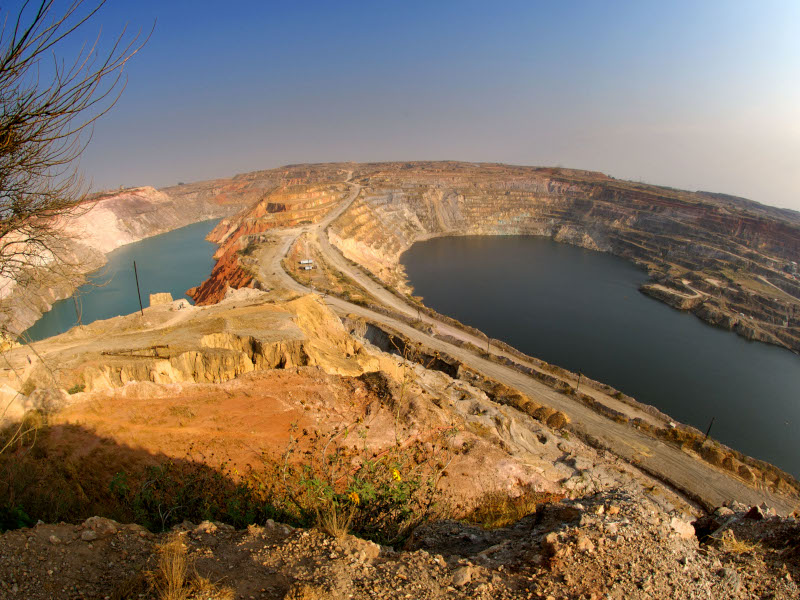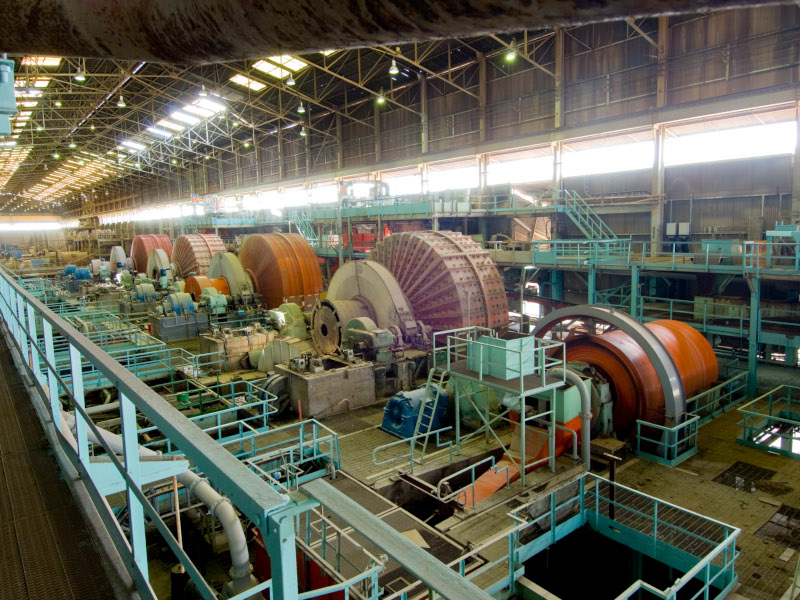The Katanga KOV copper-cobalt project is an open-pit project located in Lualaba province of the Democratic Republic of Congo (DRC).
Katanga Mining owns and is operating the project through two joint ventures namely Kamoto Copper Company (KCC) and DRC Copper and Cobalt Project (DCP).
Glencore owns 86.3% of Katanga Mining Limited (KML), which holds 75% stake in Kamoto Copper Company (KCC). State-owned mining companies La Generale des Carrieres et des Mines (GCM) and La Société Immobilière du Congo hold the remaining 25% stake in KCC.
Katanga KOV is the largest high-grade copper resource in the world and is made up of four ore bodies namely Kamoto East, Oliveira, Virgule (jointly KOV), and FNSR.
Project Gallery
-

KOV mine is the largest high-grade copper resource in the world. Image courtesy of Katanga Mining Limited.
-

Ore from the KOV mine is processed at the Kamato concentrator plant. Image courtesy of Katanga Mining Limited.
-

The Kamato concentrator is located approximately 4km from Kolwezi. Image courtesy of Katanga Mining Limited.
Katanga KOV copper-cobalt project location, geology, and mineralisation
The Katanga KOV copper-cobalt project is located at Kolwezi District in the Lualaba Province of the Democratic Republic of Congo.
The western end of the Katanga copper belt holds the mineralised zones hosted mainly in late Proterozoic Katangan system meta-sedimentary rocks, and sediments with minor volcanic, volcanoclastic, and intrusive rocks.
Primary mineralisation occurs in the form of sulphides, within the Lower Roan for the low grade ore body.
Primary copper sulphides minerals occur as bornite, chalcopyrite, chalcocite, and occasional native copper, while cobalt is in the form of carrolite. The mineralisation is either disseminated or in association with hydrothermal carbonate alteration and silicification.
Katanga KOV copper-cobalt project reserves
The Katanga KOV copper-cobalt project has a probable reserve of 60.5Mt grading 3.70%TCu (percentage total copper content) and 0.48% cobalt, according to December 2018 estimates.
Mining at KOV open-pit
Following dewatering in 2010, 5.4Mt of ore was mined from the KOV open-pit in 2014 and 4.6Mt in 2015. The mining was minimised in 2015 following slump in metal prices, and resumed in 2017 ahead of the commissioning of the whole ore leach (WOL) processing facility.
The applied mining method is conventional open-pit mining, which consists of drilling, blasting, loading, and hauling.
Mining at the project is expected to be continued until 2028, at a strip ratio of 7.2 on a tonne on tonne basis. Ore production is primarily oxide and mixed material with just 8% sulphide ore.
Ore processing
The KCC process plant comprises the Kamato Concentrator (KTC) and Luilu plant.
KTC historically treated a mixed oxide and disseminated sulphide ore from KOV and a sulphide ore from KTO. It applied two separate mill and float circuits to produce an oxide concentrate and a sulphide concentrate from the mixed ore, as well as a sulphide concentrate from the sulphide ore.
At the new KTC circuit, ore from the KOV open-pit is mixed with the ore from Mashambe East to produce a sulphide pre-float concentrate, and oxide form tailings. The resultant concentrate and tailings are forwarded to the Luilu metallurgical plant for further processing to produce copper cathode metal and cobalt hydroxide cake.
Ore is crushed and milled to secure a grinding size and then forwarded to the flotation circuit, which consists of two distinct parallel flotation circuits. The resultant product is directed to the common cleaner circuit.
The cleaner circuit upgrades the copper and sulphur content of the flotation concentrate.
Contractors involved
KML and KCC engaged Golder Associates Africa to supervise the preparation and review the technical report prepared on all the material assets owned by KML in Congo.
